by Luiz Menini Neto |
Work in progress, in association with Rafaela C. Forzza (Botanical Garden of Rio de Janeiro) and Ruy J. V. Alves (National Museum / UFRJ). Part of the dissertation of author's thesis |
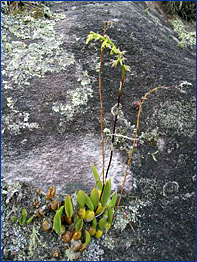 |
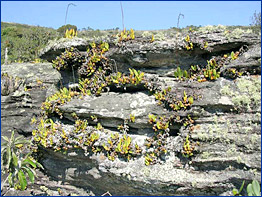 |
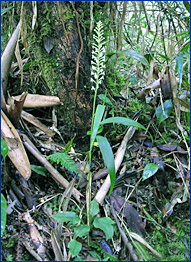 |
The
Parque Estadual do Ibitipoca (PEI - State Park of Ibitipoca), situated
in south of the state of Minas Gerais, municipal district Lima Duarte,
district of Conceição do Ibitipoca, has been created in
July 4th 1973. |
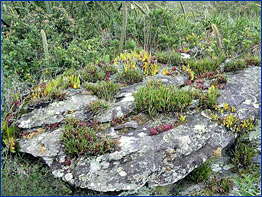 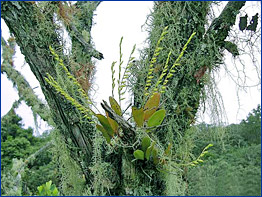 |
It
presents an area of 1923,5 hectares, with a relief scarped and altitudes
varying from 1100 to 1784 meters. The Park shelters an area with many falls, high walls and places of extreme scenic beauty, added to a small height vegetation which make possible the execution of ecological walks with relatively little effort (Salimena, 2000). The PEI vegetation is a mosaic of singular communities, which shelter the Atlantic Forest, cerrados |
 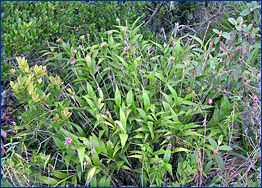 |
|
(savannah) of altitude and rupestrian fields. As a result of this union
of vegetation types so distinct, the region assembles typical species
from medium and altimontane level (Atlantic Forest), rupestrian fields
from of Espinhaço Chain and from savannah. It is reported inside the domain of the Park, a great diversity of lichens, tree-ferns, gramineae, orchids, bromeliads, immortelle, vellozias and carnivore (Menini Neto & Forzza, 2002). |
The
diversity of the species registered for the family Orchidaceae in PEI
is high. Nowadays, we have listed 120 species inside 45 genera (Table
3) for the area. The species occur in all environments as epiphyte,
terrestrial or rupicolous. The presence of pseudobulbs and velamen which
act, respectively, in storing and absorbing water, allows those plants
to survive completely in the rupestrian fields (where the soil is shallow,
sandy and doesn't hold the water back) or as epiphyte in the trunks
of the trees. The great majority of the species occurs as epiphyte, in the interior of the Mata Grande (Great Wood) (area of ombrophilous forest), in the riparian woods or cloudy forest in the high part of the Park, high humid environments. |
 Dichaea cogniauxiana |
Between
them, we can mention, for example: Dichaea cogniauxiana, Eurystyles
cogniauxii, Octomeria diaphana, Pleurothallis platystachys, Rodrigueziella
gomezoides, Stelis megantha, Trichosalpinx montana, between others. |
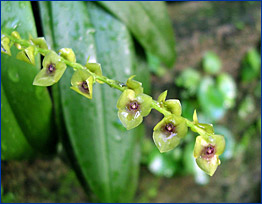 Stelis megantha |
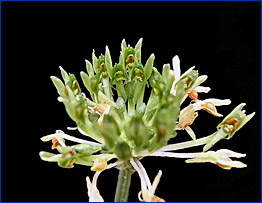 Malaxis excavata |
Between
the terrestrial species in the wood, we can mention: Cranichis candida,
Erythrodes commelinoides, Galeandra beyrichii, Malaxis excavata (occurring
in sandy soil, in cloudy forests), Sauroglossum nitidum and
Stigmatosema polyaden. |
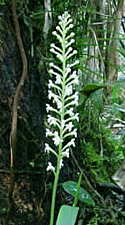 Cranichis candida |
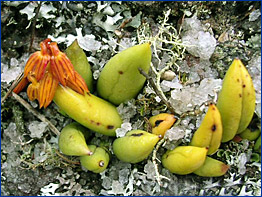 Pleurothallis johannensis |
In the rupestrian fields, we can find the rupicolous species (Bifrenaria harrisoniae, Bulbophyllum cribbianum, Hoffmannseggella crispata, Pleurothallis johannensis), terrestrial in sandy soil (Cleistes, Habenaria and Zygopetalum species) and epiphytes (Isabelia violacea – also found the interior of the wood –, Pleurothallis rubens, Prosthechea allemanoides, Prosthechea vespa, Sophronitis brevipedunculata, etc.). |
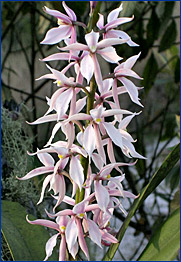 Prosthechea allemanoides |
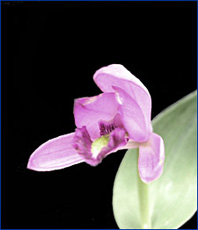 Cleistes brasiliensis |
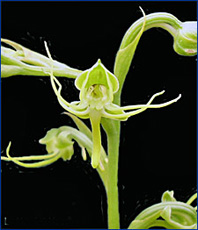 Habenaria rolfeana |
 Zygopetalum triste |
We
should point out the occurrence in the PEI of six species of Orchidaceae
present in the Red List of Threatened species of the Flora of Minas
Gerais (Mendonça & Lins, 2000): Bulbophyllum warmingianum, Cattleya bicolor, Cattleya loddigesii, Isabelia violacea, Oncidium warmingii and Sophronitis coccinea. |
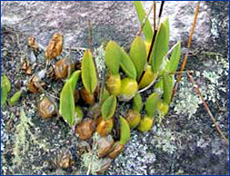 Bulbophyllum warmingianum |
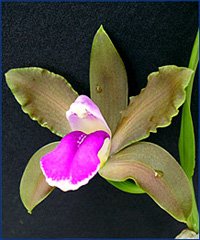 Cattleya bicolor |
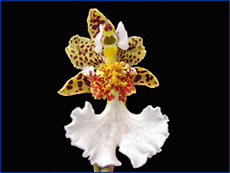 Oncidium warmingii |
Even
being a relatively small area, the Parque Estadual do Ibitipoca is one
of the state park most visited of Minas Gerais, receiving tourists coming
from all parts of the Brazil and abroad. In the last decade, the number
of visitors increased, at about, 500%. In 1988, the Park received 7.632 visitants a year. Nowadays, this number reaches 40.000 people. One of the most great problem related to the visitation of the area is the formation of erosive process in trails, the crumbling and glides of the hillsides and the predatory action reaching the most showy species. Some species of the Orchidaceae in the Park have been suffering, all along those years, an accelerated process of population reduction. Two facts can be contributing for this reality: The trampling on and the extraction. Species such as Hoffmannseggella crispata and Sophronitis brevipedunculata are plants which become more and more rare to be admired in their habitats. This fact is, possibly, related to the attraction of the flowers which are collected by visitors or by the local extractors. Another orchids such as the species of Bifrenaria, Cattleya, Prosthechea, Oncidium and Zygopetalum, just for mentioning those considered as the most showy, are also threatened of disappearing from the park. Those facts show the necessity of elaborating a plan of handling the area, with training guides to go with tourists, as well a program of environmental education showing them the importance of not picking up the natives plants. |
| We believe that those are small but value contributions for knowledge and consequently, for the preservation of the floristic diversity of this big state. |
=
Born, M. G.; Maas, P. J. M.; Dressler, R. L. & Westra, L. Y. T.
1999. A revision of the saprophytic orchid genera
Wullschlaegelia and Uleiorchis. Bot. Jahrb. Syst. 121(1): 45-74. |